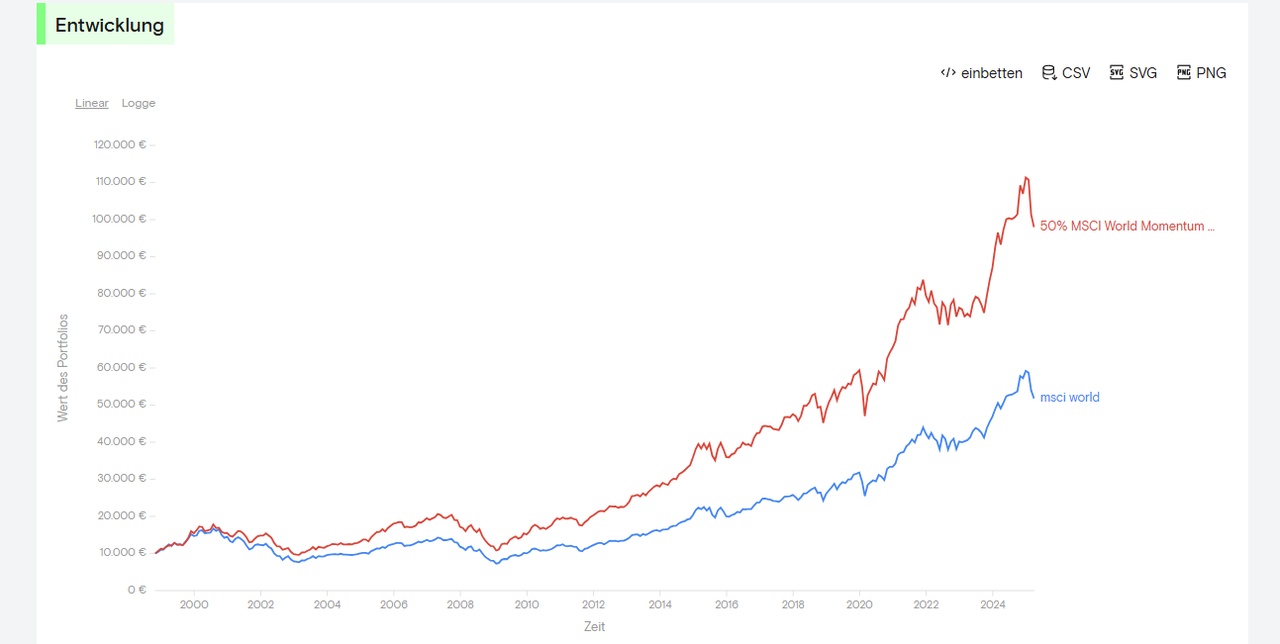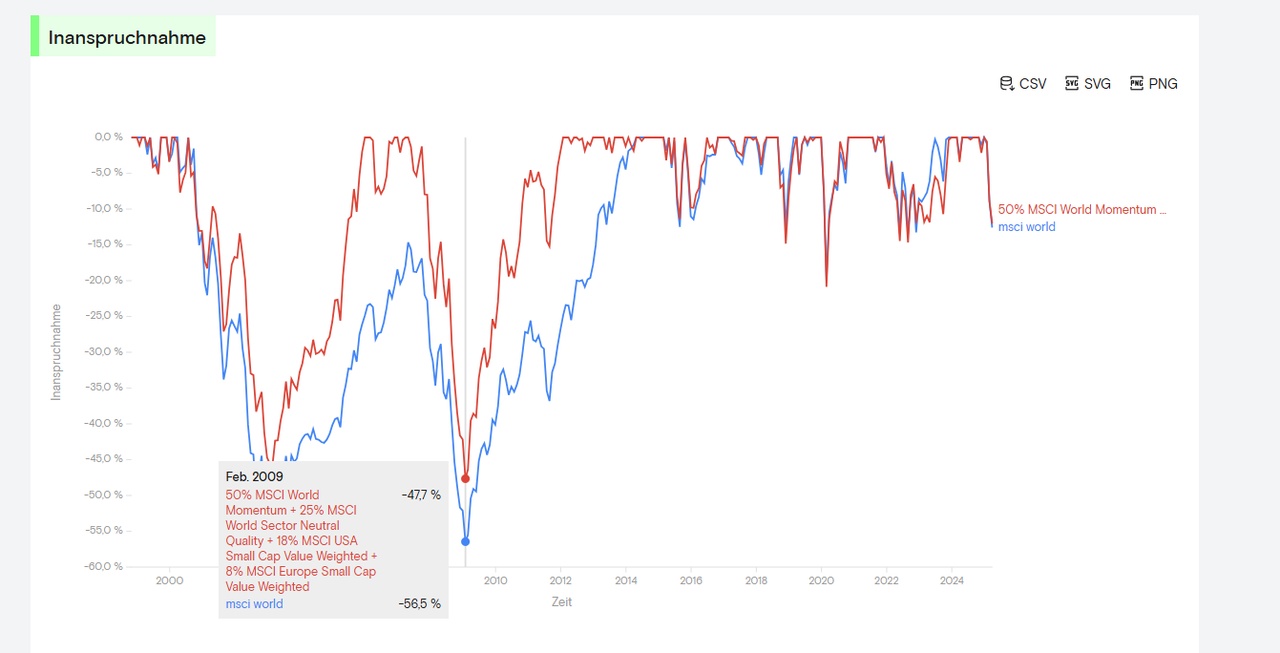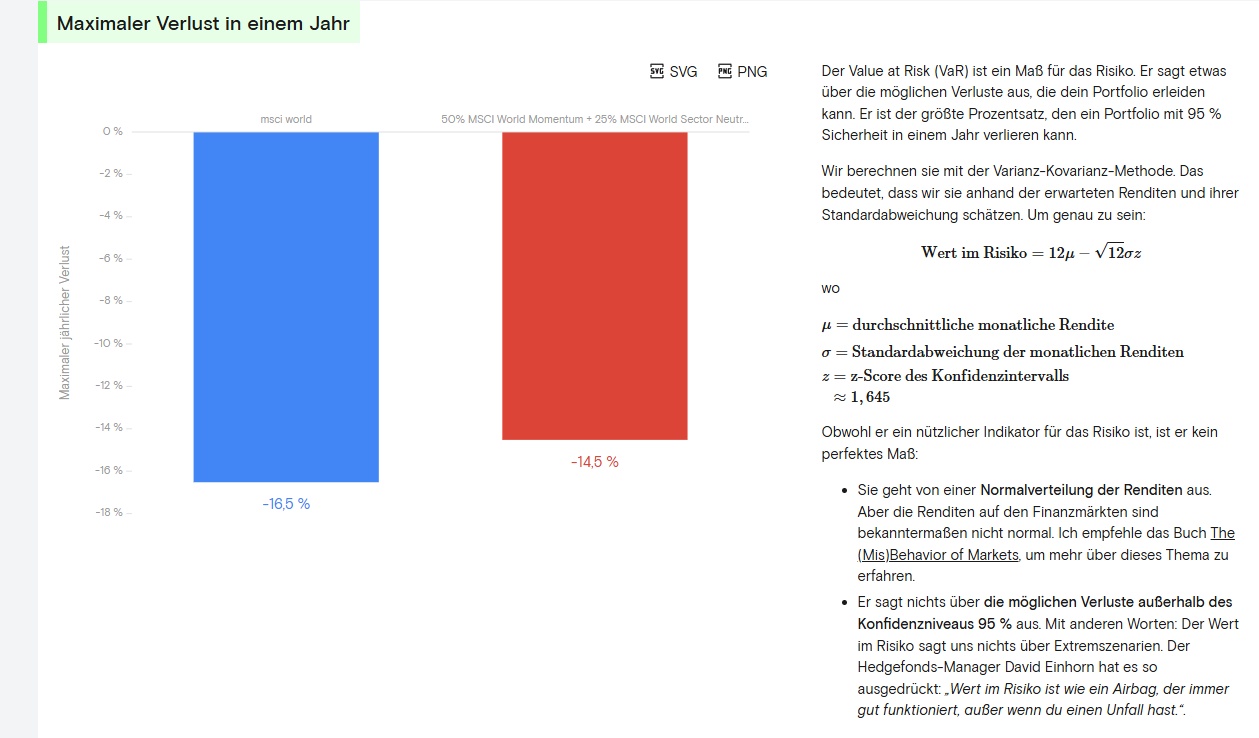What do you think about factor investing? Based on personal preferences and research, I have created a simple sample portfolio to illustrate the potential of this strategy. I compared it with the MSCI World Index $IWDA (+1.34%) index.




The results are quite convincing - the factor-based portfolio outperforms the benchmark in terms of both return and risk-adjusted performance:
Annualized Return:
- Factor portfolio: 9.02%
- MSCI World: 6.42 %
Volatility (standard deviation):
- Factor portfolio: 14.76
- MSCI World: 14.48
Sharpe Ratio:
- Factor portfolio: 0.55
- MSCI World: 0.39
Maximum drawdown (during the 2008 financial crisis):
- Factor portfolio: -47.7%
- MSCI World: -56.5%
Value at risk (VaR, 95% confidence, 1 year):
- Factor portfolio: -14.5
- MSCI World: -16.5 %
This suggests that a well thought-out factor portfolio can achieve higher returns and at the same time manage downside risk better than a broad benchmark such as the MSCI World.
I look forward to hearing your opinions or how this compares to strategies you are currently pursuing.







